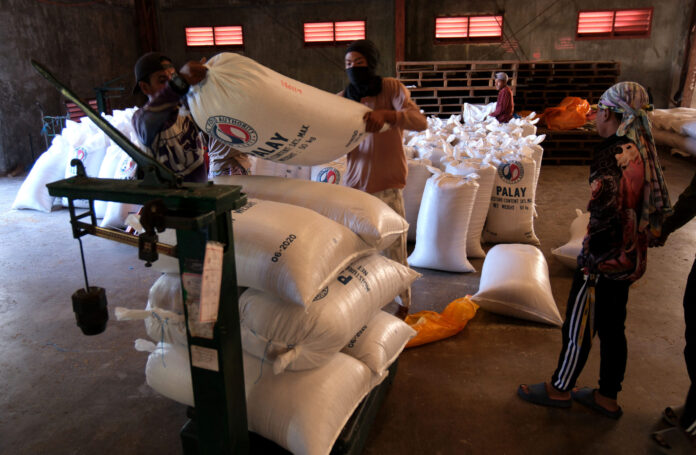The National Food Authority (NFA) has significantly increased its rice buffer stock, now equivalent of 7.56 million 50-kilo bags of milled rice, as the summer harvest reaches its peak.
The higher inventory aligns with President Ferdinand Marcos Jr.’s directive to ramp up palay procurement efforts and support as many farmers as possible.
As of 24 April, the NFA’s inventory consisted of 10.1 million bags of palay (unmilled rice) and 1.2 million bags of milled rice—enough to feed the entire country for 10 days. This figure is the highest since the end of 2020.
“We still have about ₱12 billion allocated for palay procurement, and we intend to maximize purchases during the ongoing summer harvest,” said NFA administrator Larry Lacson. “This will support the government’s initiative to provide more affordable rice to Filipino consumers.”
By law, the NFA is mandated to purchase palay exclusively from local farmers—millions of whom rely on rice farming for their livelihood and remain among the country’s poorest. So far this year, the NFA has been buying palay at prices ranging from ₱18 to ₱24 per kilo.
Agriculture secretary Francisco P. Tiu Laurel Jr. emphasized that the successful implementation of the newly announced ₱20-per-kilo rice program is crucial—not only to fulfill a major campaign promise of President Marcos but also to free up storage space as the NFA accelerates procurement
“In the past, the NFA was allowed to directly sell rice to the public, helping stabilize both supply and prices while managing its stockpile more efficiently,” Tiu Laurel explained. “However, since the passage of the Rice Tariffication Law, the agency’s role has been limited to buffer stocking for calamity and emergency response. It no longer holds the regulatory functions essential to managing rice prices among others.”
This provision in the RTL has barred the NFA from expeditiously disposing of its rice stocks to better manage inventory, specially ahead of the harvest season.
Since the passage of the RTL and the NFA’s inability to compete locally with traders, the buffer stocks has steadily fallen to an alarming 41,285 metric tons, just enough to cover national consumption for one day. The trend has since reversed after the NFA Council chaired by Tiu Laurel approved a higher buying price of up to P30 per kilo of palay.
The DA chief added that beyond the pilot launch of the ₱20 rice program in the Visayas—where local government units are expected to help subsidize the cost—the Department of Agriculture is actively exploring other ways to expand access to affordable rice.
“Hopefully, we can identify a legal mechanism that allows us to move forward with the program—even without an exemption from the Commission on Elections—so we can finally deliver on this long-awaited promise of President Marcos,” he said.







